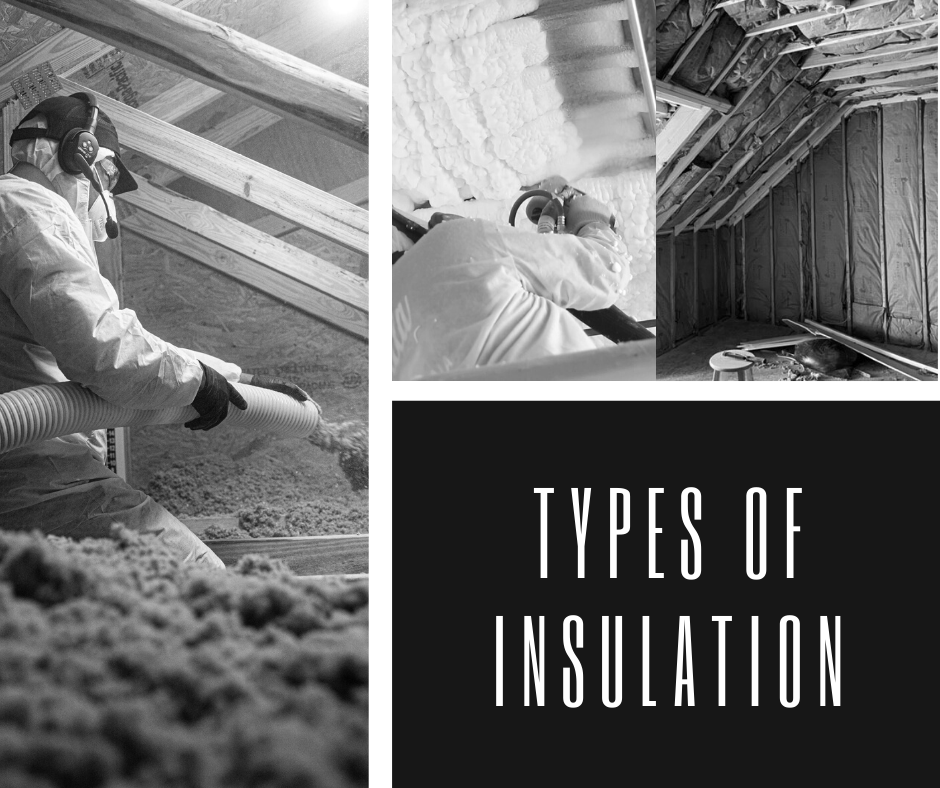4 Types Of Insulation

4 Types of Insulation
While looking to insulate your home, you can choose from the different types of insulation. The types of insulation usually vary and are used for different kinds of applications. Insulation helps preserve heat during the winter season and avoid heat gain during summer; thus, some insulation will be more effective in some locations than others.
However, while choosing insulation for your home, you'll need to determine:
- The part of your home you intend to insulate.
- The standard R-value of your location.
- Your budget.
You can also consider some factors like installation processes, flammability, and the durability of the insulation material. Here are some types of insulation for you to choose from if you're considering insulating your home:
Blanket Batt Insulation
The blanket batt insulation is very common compared to the other types of insulation. The blankets usually come in different materials such as fiberglass, mineral wool, plastic, or natural fiberglass. The most common type of material among these is fiberglass. It's easy to get and can be installed in the ceiling, floors, and attic.
The fiberglass batt insulation is affordable and easy to install, but it has its downsides. Batt insulation is usually delivered in pre-cut sizes; hence, a readjustment can cause compression and make it less effective. Also, each batt insulation inch has a low R-value; therefore, you'll have to use many layers to get the required R-value.
Foam Board
Foam board insulation is thicker compared to blanket batts. They come in different materials and vary in thickness; this makes them more expensive. Foam boards can be applied to other parts of the home; they can serve as internal and external wall sheath, foundation insulation during construction, and ceiling insulation. There are three different types of rigid foam insulation: expanded polystyrene, extruded polystyrene, and polyisocyanate.
Foam boards are very effective; even with the same thickness, they provide almost times 2 of the R-value of most insulation. They are water-resistant, easy to manipulate, and prevent heat conduction through steel and wooden materials. However, Foam board spray has its own downsides; they are expensive to use on already built walls. The wall would have to be pulled down and rebuilt with Foam board insulation.
Blown-In Insulation
Also known as loose fill, blown-in insulation is one of the common insulation used in many homes. Blown-in is comprised of granules, fragments, or loose materials, making it look fluffy. It's also effective, especially in areas with limited space, easy to use, and serves as multi-purpose insulation. It can be applied on ceilings, attics, walls, and crawl spaces without invading the building.
Loose-fill insulation is made of materials such as cellulose, mineral wool, and fiberglass. It comes packaged in bags and blown into the building with a unique device. The major downside of blown-in insulation is that it must be properly sealed; otherwise, it becomes susceptible to mold and external factors.
Spray Foam Insulation
Spray foam insulation is effective in sealing gaps in the home and reducing heat loss. You can use it to cover wider surfaces and gain access to areas that are harder to reach. The liquid spray foam is usually sprayed, injected, or foamed-in to wall surfaces, under the floor and roofs and attic surfaces. The liquid expands, spreads around the surface, and hardens later. There are two types of this insulation: the open cell and the closed-cell.
Open-cell spray insulation has an R-value of 3.8 per inch. It is less dense and contains air. Closed-cell spray has an R-value of 7 per inch: it has high-density cells and contains gas. Spray foam insulation can be costly, plus it's not advisable to perform DIY insulation with seat foam.
Need Professional Insulation Services? Call Us Today!
For your professional home insulation needs, contact us today at Koala Insulation. We deliver quality and excellent insulation services that will surpass your expectations. Our company is proud to serve clients across Nashville and surrounding communities including Brentwood, Franklin, East Nashville, Madison, Old Hickory, Bellevue, Belle Meade, Green Hills, Hermitage, La Vergne, Nolensville, and Smyrna. Call us today to get an accurate quote. A wonderful experience awaits you!
Find Your Location


Get a quote



